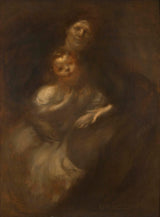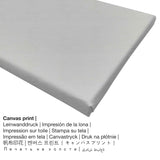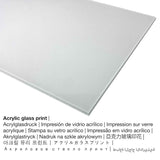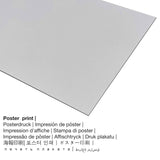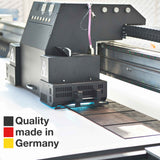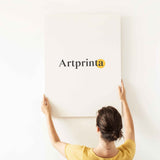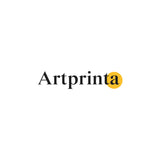Eugène Carrière, 1903 - Ịmụ nwa - mbipụta nka mara mma
Ụtụ gụnyere. Mbupu gbakọrọ na ndenye ọpụpụ.
a 20th narị afọ nka nka Nne e sere ya Eugène Carrière in 1903. Ejiri nha ya rụọ ọrụ nka: Ogologo: 131,5 cm, obosara: 97,5 cm. Oil, Canvas (material) was applied by the painter as the technique for the painting. The original artwork is inscribed with the information - "Date and signature - Signature and dated lower right: "Eugène Carrière 1903"". Today, this work of art is included in the digital collection of Petit Palais - Musée des Beaux-arts de la Ville de Paris, which is an art museum in the 8th arrondissement. This public domain artpiece is included with courtesy of Petit Palais Paris.: . N'elu nke ahụ, nhazigharị bụ ihe osise nwere oke 3: 4, which implies that the length is 25% shorter than the width. Eugène Carrière was a male painter from France, whose art style can be classified as Realism. The European painter lived for a total of 57 afọ a mụrụ na 1849 in Gournay-sur-Marne and died in 1906 in Paris.
Data ndabere gbasara mpempe nka
| Aha nka: | "Ịmụ nwa" |
| Nhazi: | sere |
| Otu izugbe: | nkà nke oge a |
| Narị afọ nka: | 20th narị afọ |
| Emepụtara n'afọ: | 1903 |
| Afọ nka: | ihe karịrị 110 afọ |
| Usoro izizi: | Mmanụ, Canvas (ihe) |
| Nha izizi (ọrụ nka): | Ogologo: 131,5 cm, obosara: 97,5 cm |
| mbinye aka izizi nka: | Date and signature - Signature and dated lower right: "Eugène Carrière 1903" |
| Ụlọ ihe ngosi nka / mkpokọta: | Petit Palais - Musée des Beaux-arts de la Ville de Paris |
| Ebe ngosi nka: | Paris, France |
| Dị n'okpuru: | Petit Palais - Musée des Beaux-arts de la Ville de Paris |
| Ụdị nka nka: | ngalaba ọha |
| Site n'aka: | Petit Palais Paris |
Ozi ndabere izugbe gbasara onye na-ese ihe
| aha: | Eugène Carrière |
| okike onye nka: | nwoke |
| Obodo onye nka: | French |
| Ọrụ: | onye na-ese ihe |
| Obodo onye nka: | France |
| Otu nka: | omenkà nke oge a |
| styles: | Ihe ngosi |
| Afọ ọnwụ: | 57 afọ |
| Afọ amụrụ: | 1849 |
| Obodo ọmụmụ: | Gournay-sur-Marne |
| Afọ ọnwụ: | 1906 |
| Nwuru na (ebe): | Paris |
Ihe ndị a na-ahọrọ
Anyị na-enye ihe dị iche iche dị iche iche na nha maka ngwaahịa ọ bụla. Ị nwere ike ịhọrọ n'ime nhọrọ nhazi ngwaahịa ndị a:
- Poster (akwa akwa akwa): Our poster is a printed sheet of cotton canvas with a granular finish on the surface, that reminds the actual version of the work of art. Please bear in mind, that depending on the size of the canvas poster print we add a white margin of something between 2-6 cm round about the painting to facilitate the framing with your custom frame.
- Mbipụta iko acrylic (nke nwere ezigbo mkpuchi iko n'elu): An print on acrylic glass, which is sometimes denoted as a an art print on plexiglass, makes the artwork into gorgeous home decoration. Further, the acrylic glass print forms a good alternative to dibond and canvas prints. Your own replica of the artwork is being printed with state-of-the-art UV direct print machines. This makes sharp, vibrant color shades. The great upside of a plexiglass fine art copy is that contrasts as well as smaller artwork details will be more identifiable because of the very subtle tonal gradation.
- Mbipụta aluminom (aluminium dibbond): Aluminium Dibond prints are prints on metal with an outstanding effect of depth. For the Direct Aluminium Dibond option, we print your selected artpiece right onto the aluminium composite white-primed surface. The white & bright parts of the artwork shimmer with a silky gloss, however without the glow. The colors are luminous in the highest definition, the fine details are clear and crisp.
- Mbipụta kanvas: A printed canvas, which should not be mistaken with a painting on a canvas, is a digital replica printed on an industrial printing machine. A canvas makes a unique impression of three dimensionality. The canvas print produces a charming, appealing impression. The advantage of canvas prints is that they are relatively low in weight, which implies that it is easy to hang up your Canvas print without extra wall-mounts. Canvas prints are suited for any kind of wall.
Banyere ihe
| Nkewa edemede: | ezi nka mmeputakwa |
| Mmeputakwa: | mmeputakwa n'ụdị dijitalụ |
| Usoro nhazi: | Mbipụta UV / dijitalụ |
| Mmalite ngwaahịa: | German mmepụta |
| Stockdị ngwaahịa: | mmepụta ihe na-achọ |
| Ihe eji eme atụmatụ: | ihe ndozi ụlọ, ime ụlọ |
| Ndozi onyonyo: | usoro eserese |
| Njikwa oyiyi: | 3: 4 (ogologo: obosara) |
| Mmetụta akụkụ: | ogologo bụ 25% mkpụmkpụ karịa obosara |
| Akụrụngwa ị nwere ike ịhọrọ: | akwụkwọ mmado (akwụkwọ kwaaji), mbipụta ọla (aluminium dibond), mbipụta kanvas, mbipụta iko acrylic (nwere ezigbo mkpuchi iko) |
| Kanvas n'elu etiti ihe ndọtị (mbipụta akwa akwa): | 30x40cm - 12x16", 60x80cm - 24x31", 90x120cm - 35x47", 120x160cm - 47x63" |
| Mbipụta iko acrylic (nke nwere ezigbo mkpuchi iko): | 30x40cm - 12x16", 60x80cm - 24x31", 90x120cm - 35x47", 120x160cm - 47x63" |
| Mbipụta akwụkwọ mmado (akwụkwọ kwaaji): | 30x40cm - 12x16", 60x80cm - 24x31", 90x120cm - 35x47" |
| Aluminium dibond ebipụta (ihe aluminium) nha dị iche iche: | 30x40cm - 12x16", 60x80cm - 24x31", 90x120cm - 35x47" |
| ụba: | enweghị etiti |
Disclaimer: We try our utmost in order to depict our art products with as many details as possible and to demonstrate them visually. At the same time, some tone of the print materials and the print result might diverge marginally from the representation on the monitor. Depending on the settings of your screen and the condition of the surface, color pigments can unfortunately not be printed as exactly as the digital version on this website. Considering that our fine art prints are processed and printed by hand, there might as well be minor variations in the motif's exact position and the size.
© Nchekwa ikike nwebisiinka, Artprinta.com

